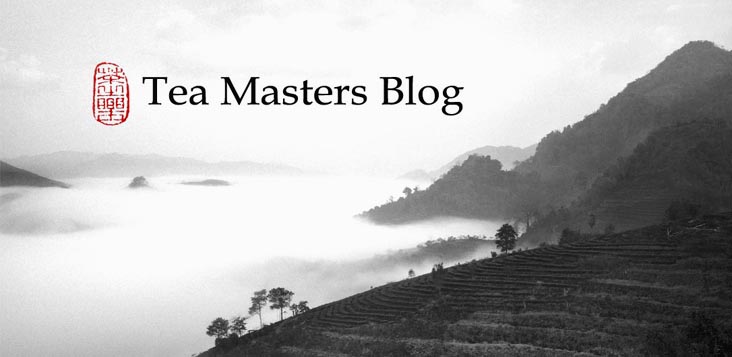Last week, I scheduled the visit of 4 guests on the same day! This allowed me to drive them to a beautiful spot just half an hour away from Banciao. I had discovered this place in spring, in the the moutains of Toucheng, with 2 other tea visitors.
We brewed tea on this small hill covered by luscious trees (picture on the left).
After the short climb, I set up the Cha Xi and started a charcoal fire on the Nilu to heat the spring water we had collected a few moments earlier. On this hot day, I had prepared 4 different teas from my selection. From the lighter to the heavier, we tasted the 2011 Ali Shan Jinxuan, a 2011 fall Lushan Oolong, a 2010 spring 2 Shan Lin Shi Hung Shui Oolong and a 2011 Yunnan Dian Hong.
We use a neutral Shan Shui qinghua gaiwan to brew the first 3 Oolongs. For the Hung Shui Oolong, I let Neil -who has lived 8 years in Taiwan- brew a couple of times. This allows me to take a few pictures.
With the Ali Shan Jinxuan, we experienced the lightness and fine power of a spring high moutain Oolong. Everybody was pleased by its sweet, creamy aftertaste.
The fall 2011 Lushan Luanze Oolong we tasted the stronger, riper aromas of a fall Oolong. Also, while less fragrant, the Luanze Oolong brings more body and a stronger aftertaste.
But this strength and warmth became even more obvious with the Hung Shui Oolong. Eric made an interesting observation: he had had roasted and unroasted Oolongs before, but this one managed to combine both the roast and the fresh characteristics. Its roasting is just right, very well balanced. For this tea, we were amazed how the dry leaves would smell finer and sweeter in the jar than in the plastic foil. Just a few seconds made a difference.
We used this Celadon ever (by David Louveau) to add water in the testubin. The thin spout creates a fine and slow flow that conveys a graceful and peaceful mood.
We finished with a brew of a spring 2011 Yunnan Dian Hong I recently added to my selection. The leaves were harvested in Mojiang (Midi). What makes them special is that they come from 100 years old big trees. Usually, the farmer would use them to make wild puerh cakes. But this spring he used them to make Dian Hong, a red tea (fully oxidized).
The sweet, fruity smells from the porcelain jar make us salivate. I used my silver teapot to brew just a few leaves (opened, they occupy around 10-20% of the volume of the teapot only!) Silver is neutral like porcelain, but it stays at a much, much higher temperature. It will emphasize both the good and the bad.
The result was absolutely stunning. Like all teas we had tasted, it had a very clean start (and great clarity to the eye), but this Cha Qi tasted so refined and endless. Perfection.
These good teas were easy on our stomachs, but they helped to open our appetite. So, we headed to a typical Chinese, mountain restaurant nearby. Good tea, fresh food, passionate tea friends. We felt so close even though we had just met! The 5 hours we had spent together felt like minutes.
I hope we can meet again, maybe on a more regular basis...
The Chanoyu Hyaku-shu [茶湯百首], Part 1: Poem 2.
2 hours ago















2 comments:
Quel plaisir de déguster le thé entre amis après une bonne marche quand le soleil nous honnore de sa présence.
j'en rêve!!!
Post a Comment